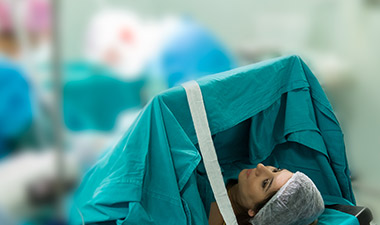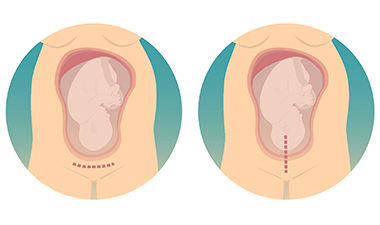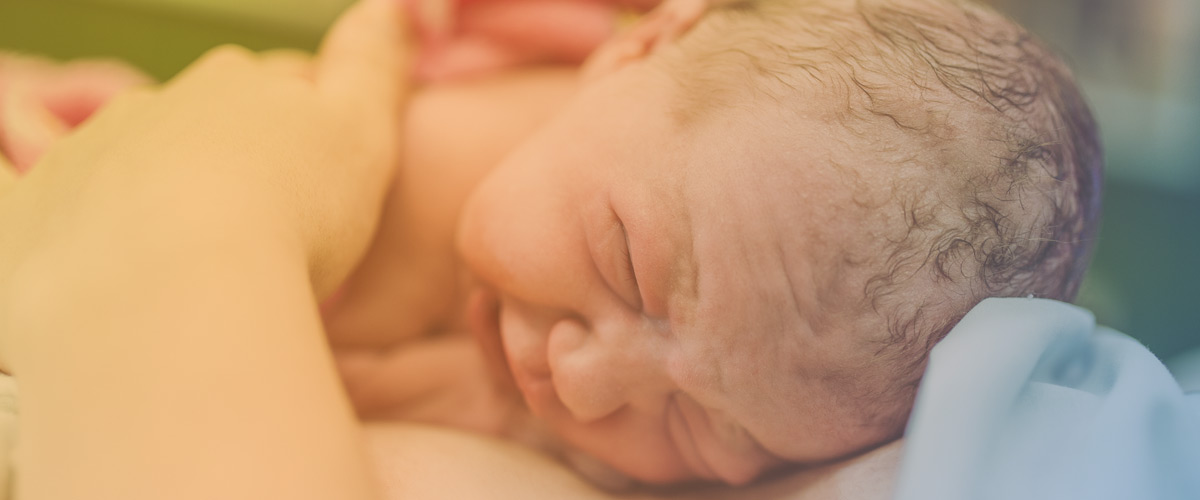Caesarean section (C-section)
What is a C-section?
A C-section is the delivery of your baby through a surgical opening in the lower belly instead of through the vagina.
Under what circumstances are C-sections performed?
A C-section is needed in a number of circumstances. Sometimes these are related to the baby and sometimes the mother.
Reasons related to the baby:
- Abnormal heart rate
- Poor position, including some breech positions
- Abnormalities in the fetus that make it unsafe for labour
Reasons related to the mother/delivery process:
- Slow or difficult delivery
- Cervix not dilating
- Previous C-section and a vaginal delivery is not advised or if the mother prefers not to attempt a vaginal delivery after Caesarean (VBAC)
- HIV positive (without suppression of the viral load) or active herpes infection
- The placenta is positioned so that it blocks the cervix (placenta previa)
Is a C-section safe?
A C-section is a very common surgical procedure but still has associated risks. Babies born via C-section can have respiratory problems but these usually resolve quickly. The recovery time for the mother is longer and the risk of infection is greater compared to vaginal delivery. And, once there is a scar in your uterus, there are special considerations for your next labour. As with any surgery, there are complications that can arise. For example, the incision or the uterus can become infected, bleeding and blood clots are more likely, urinary tract infections can happen, and bowel function may be decreased.
On the other hand a difficult vaginal delivery can cause serious injury to both mother and baby. The decision as to which is the safest alternative needs to be made carefully. There are no simple answers that apply to everyone. Your health care provider can discuss risks and benefits with you to help make your decision easier.
What happens during a C-section?
Normally your birth partner can be present with you in the operating room. There will be a sheet in front of you that will prevent you from completely seeing what is happening. Usually you or your partner will be able to hold your baby briefly after he or she is delivered.
 Preparations for C-section include insertion of a catheter into the bladder and placement of an intravenous (IV) line. Usually pain relief is provided by an epidural or spinal anesthetic, but sometimes in emergency situations, general anesthetic is used. Once you are numb, the obstetrician will make an incision through the skin, fatty tissue, and the wall of the abdomen. Then an incision is made in the uterus and the baby is delivered.
Preparations for C-section include insertion of a catheter into the bladder and placement of an intravenous (IV) line. Usually pain relief is provided by an epidural or spinal anesthetic, but sometimes in emergency situations, general anesthetic is used. Once you are numb, the obstetrician will make an incision through the skin, fatty tissue, and the wall of the abdomen. Then an incision is made in the uterus and the baby is delivered.
The incisions are usually horizontal but may be vertical.
After the umbilical cord is cut and the placenta is removed, your uterus will be closed with dissolving stitches. Then your skin will be stitched or stapled.
What happens after a C-section?
After surgery your catheter will be removed. Once you are eating and drinking well, your IV will be removed. Many women who have had a previous C-section are still able to deliver vaginally in future pregnancies. Vaginal birth after Caesarean (VBAC) has a high success rate.
Can I choose to have a C-section?
If you want to have a C-section but have no obstetrical or medical reasons to do so, it is very important that you clearly understand the risks and benefits of your choice, compared to the risks and benefits of attempting a vaginal delivery. Some health care providers may not be willing to perform elective C-section.

